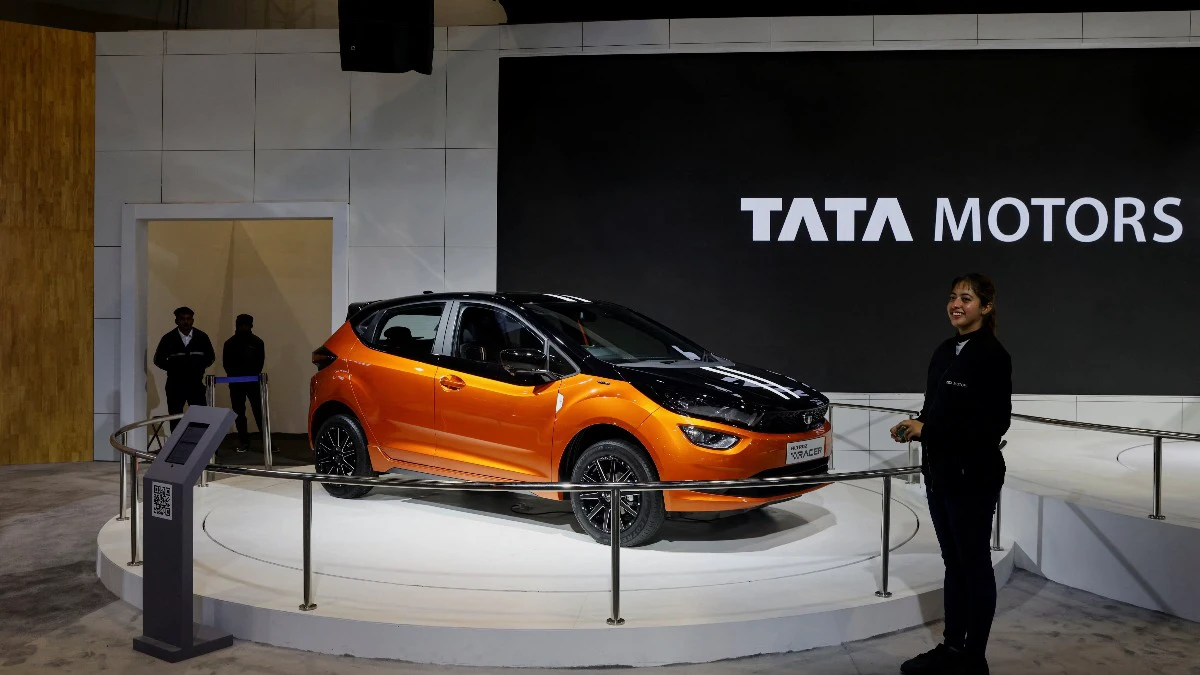Shares of Tata Motors Passenger Vehicles Ltd (erstwhile Tata Motors Ltd) are in focus on Friday morning after S&P Global Ratings changed its outlook to ‘negative’ on the Tata group firm’s long-term issuer credit rating from ‘stable’ earlier.
The rating was kept unchanged at BBB. The negative outlook, the rating agency said, reflects its view that a recovery from the operational disruption following a cyber incident at JLR could be prolonged and lead to Tata Motors PVs’ credit metrics staying weaker for longer.
“We expect cash flow at Tata Motors Passenger Vehicles to be significantly lower due to a prolonged operational disruption at its wholly owned subsidiary, Jaguar Land Rover Automotive PLC (JLR). JLR has since resumed production and is gradually ramping up. Post the demerger of the commercial vehicle operations, JLR accounts for more than 80 per cent of Tata Motors PVs’ earnings,” it said.
The rating agency has also revised its outlook on Tata Motors PVs and TML Holdings to negative and affirmed its ‘BBB’ long-term issuer credit rating. It also lowered the long-term issue rating on the senior unsecured notes that TML Holdings issued to ‘BBB-‘ from ‘BBB’.
S&P Global Ratings expects Jaguar Land Rover’s (JLR) operating performance to deteriorate sharply following the cyberattack that disrupted its production systems since August 31, 2025. The agency estimates JLR’s revenue will fall 15-18 per cent year-on-year to about £24 billion in FY26 (ending March 31, 2026), with EBITDA margins likely compressing to 3-5 per cent from 7.6 per cent in FY25 as investment intensity remains high.
Production across JLR facilities was fully halted through September and into early October, leading to a 24.2 per cent decline in wholesale and 17.1 per cent drop in retail volumes in the September quarter. S&P noted that the loss of volumes is particularly material post-demerger, given JLR now contributes over 80 per cent of Tata Motors Passenger Vehicles’ (Tata Motors PVs) earnings.
The cyberattack has weakened Tata Motors PVs’ credit metrics more than previously anticipated. S&P now projects the company’s adjusted net debt-to-EBITDA ratio to rise to 2.5-3.0 times in FY26-27 (from around 1 time earlier expected at the time of the demerger). Funds-from-operations (FFO) to debt is likely to moderate to 15-25 per cent, from over 100 per cent in FY25.
Tata Motors completed the demerger of its commercial vehicle (CV) division into TML Commercial Vehicles Ltd. effective October 1, 2025. The CV business, which previously accounted for 15-20 per cent of consolidated revenue and up to 15 per cent of EBITDA, had higher returns and lower leverage than other segments.
S&P sees the recovery path for JLR as uncertain, dependent on production normalization, global demand trends, and the extent of lasting damage from the cyberattack. Although operations have resumed, ramp-up to full capacity is expected to be gradual, with risks of permanent production loss, U.S. tariff headwinds, and potential delays in key model launches. Weakness in China could further pressure volumes if offsetting growth in other regions is limited.
Under S&P’s base case, JLR’s revenue is expected to grow 3-7 per cent in FY27 with EBITDA margins improving to 4-6 per cent. Correspondingly, Tata Motors PVs’ consolidated revenue and margins are projected at 6-7 per cent and 5-5.5 per cent, respectively-below management guidance.
Despite near-term pressure, S&P believes Tata Motors PVs’ standalone India passenger vehicle business will remain resilient, generating sufficient operating cash to fund annual investments of up to Rs 6,000 crore without substantial reliance on new debt. A gradual JLR recovery could lift the FFO-to-debt ratio toward 40 per cent by FY28.
Tata Motors PVs retains strong market positioning in India with leading EV share, a robust new model pipeline, and diversified portfolio across ICE, CNG, and EV segments. Domestic PV volumes are estimated to grow 5-7 per cent in FY26-27, supported by robust consumer demand following GST reductions.
S&P highlighted Tata Motors PVs’ conservative financial policy and track record of deleveraging, noting that faster-than-expected JLR recovery could accelerate improvement in leverage metrics. The agency also emphasised the strategic importance of Tata Motors PVs and JLR to parent Tata Sons Pte. Ltd., expecting continued financial support if required. The companies’ affiliation with the Tata Group enhances funding access, as reflected in JLR’s ability to secure emergency credit lines during the cyberattack.
S&P maintained a negative outlook on Tata Motors PVs, citing risks that JLR’s recovery could be slower than anticipated, delaying improvement in leverage. A downgrade could follow if FFO-to-debt fails to move toward 40 per cent by FY28 due to weaker sales recovery or brand erosion. Conversely, the outlook may revert to stable if faster earnings recovery and cash generation strengthen credit metrics in line with the company’s low-leverage policy.
